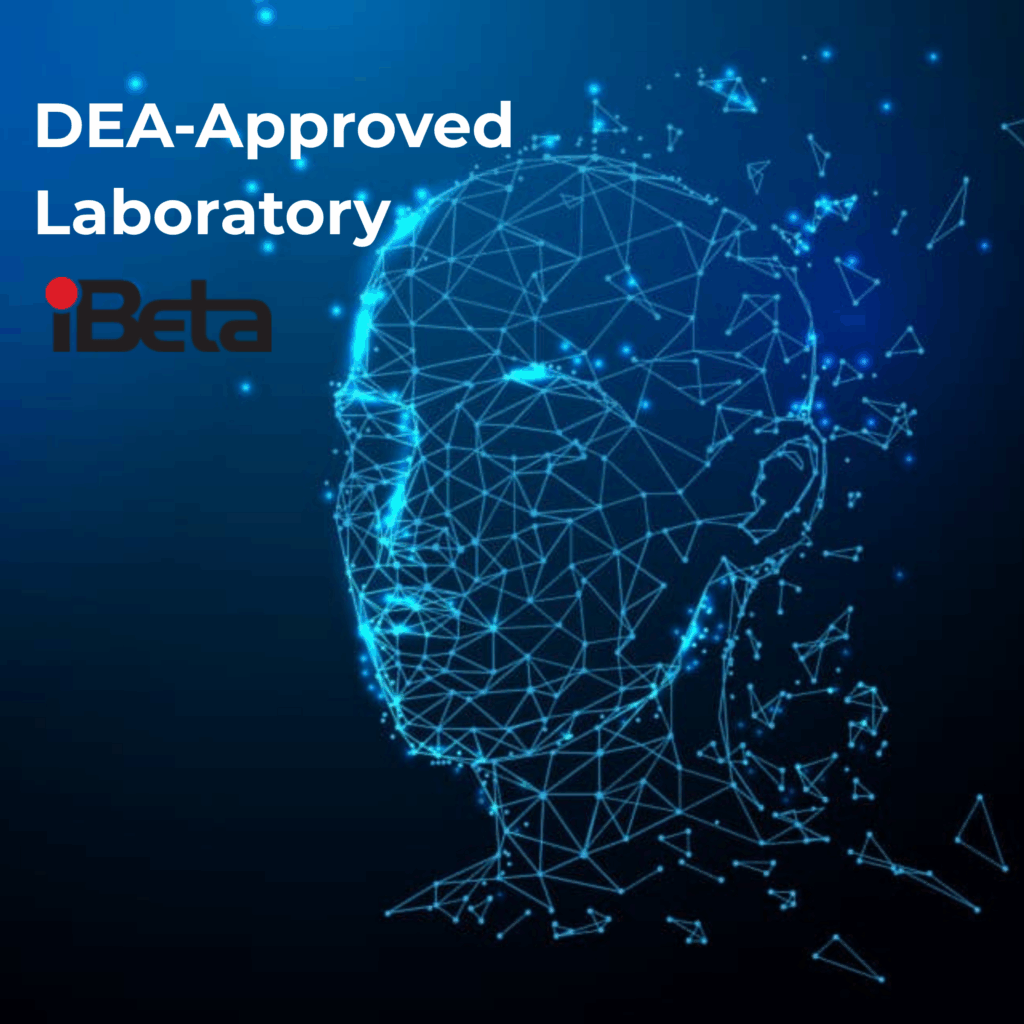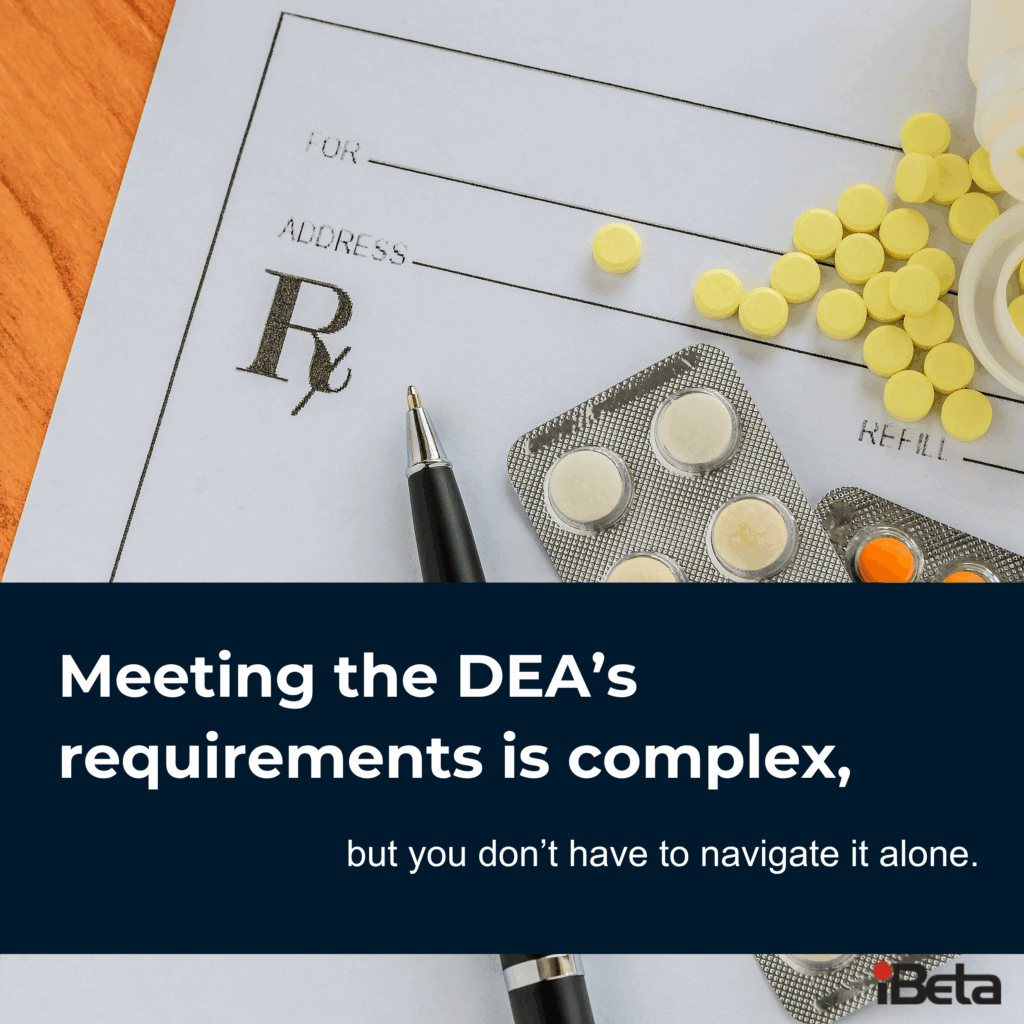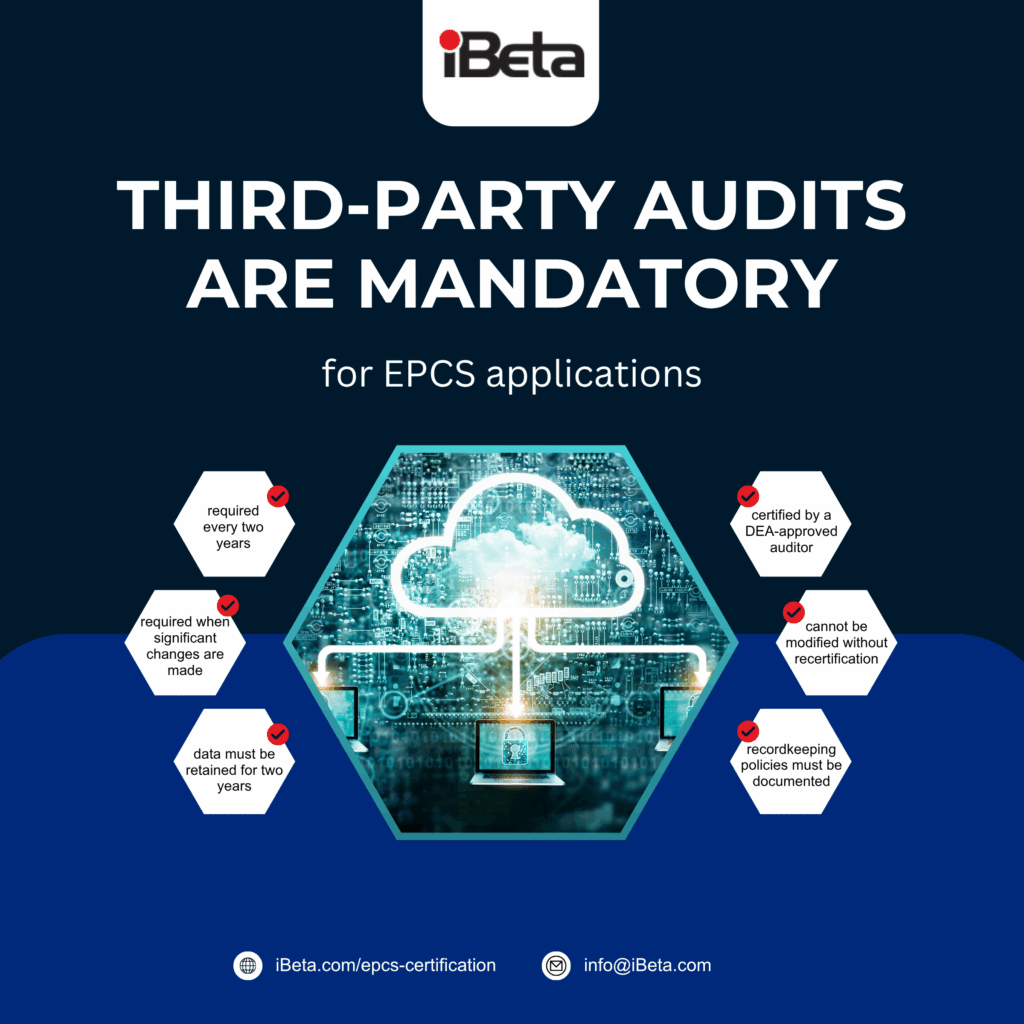When it comes to developing prescriber applications, meeting Electronic Prescriptions for Controlled Substances (EPCS) requirements set by the DEA isn’t optional, it’s essential.
Not only do these regulations ensure that prescriptions for controlled substances are secure and compliant, but they also protect your software from costly setbacks, delays, and potential non-compliance penalties. These regulations protect public safety, ensure compliance, and enable secure prescribing of controlled meds.
At first glance, these requirements can look overwhelming, but when broken down, they follow a clear structure designed to safeguard practitioners, patients, and prescription data. Let’s walk through the fundamentals you need to understand to move forward with confidence.
- Practitioner Responsibilities
- Two-Factor Authentication (2FA)
- Logical Access Control
- Audit Trails & Internal Audits
- Transmission & Printing Rules
- Third-Party Audits & Recordkeeping
- iBeta EPCS Prescriber Overview
- Why This Matters
Practitioner Responsibilities
Every prescriber application must have clear, documented procedures for handling critical scenarios. According to the DEA’s Interim Final Rule, practitioners bear the legal responsibility for ensuring prescriptions are issued in line with legitimate medical practice (21 CFR §1306.04(a)). This includes safeguards for:
- Securing hard tokens and passwords
- Responding promptly to lost or compromised tokens
- Managing failed transmissions
- Revoking access if non-compliance occurs
The BEPC EPCS Implementation Plan expands on this, noting that providers must be properly credentialed with DEA registration numbers, authorized schedules, and active Surescripts Provider Identifiers (SPI). They are also responsible for securing and managing cryptographic tokens and digital certificates used to sign prescriptions (pp. 1–2, Sections 1.1–1.2)
Clarity matters here: your application isn’t just a tool, it’s a safeguard. Setting these procedures up front protects both your users and your reputation.
Two-Factor Authentication (2FA)

One of the most critical EPCS requirements is two-factor authentication (2FA). The DEA specifies that prescribers must use two out of three authentication factors:
- Something you know (like a password)
- Something you have (like a cryptographic token)
- Something you are (like a biometric, e.g., fingerprint)
The BEPC Implementation Plan provides further operational detail, requiring PIV cards or USB cryptographic tokens as second-factor authenticators. These devices must securely store the provider’s signing certificate to meet compliance (p. 3, Section 1.3).
What this means for developers: user ID and password alone are not sufficient. The second factor, whether a biometric or cryptographic token, must meet federal standards (FIPS 140-2) and integrate smoothly into the clinical workflow to encourage adoption.
Importantly, biometric subsystems must also be tested by a DEA-approved laboratory such as iBeta to verify compliance at the required accuracy rate. This step matters because it ensures your application isn’t just compliant, it’s trustworthy for practitioners and patients alike.
Logical Access Control
Logical access ensures that only authorized practitioners can sign controlled prescriptions, and that no single individual can unilaterally grant access.
According to the DEA Interim Final Rule, logical access control must include:
- Separation of duties: one individual requests access, and at least one other individual must approve it. No single person can both grant and approve access (21 CFR §1311.125).
- Identity proofing: prescribers must first be identity-proofed by a federally approved Credential Service Provider (CSP) or Certification Authority (CA) before access can be granted.
- DEA registration linkage: access must be tied to the practitioner’s DEA registration number and prescribing authority.
The BEPC Implementation Plan expands on this, establishing distinct roles like EPCS Provider Profile Admin and EPCS Provider Access Admin to enforce this separation of duties (pp. 6–8, Sections 2.2.1, 2.3.2). It also requires that every action (granting, revoking, or updating access) be tracked in an audit log.
This dual-approval process is about far more than red tape, it’s a safeguard against unauthorized prescribing. By enforcing role separation and logging every change, prescriber applications protect the integrity of prescription authority and ensure compliance under DEA oversight.
Audit Trails & Internal Audits
Audit trails are the backbone of accountability in EPCS applications. They ensure every action is documented, reviewable, and resistant to tampering.
According to the DEA Interim Final Rule, prescriber applications must:
- Record all critical events in a secure, tamper-evident audit trail, including prescription creation, signing, transmission, alteration, and revocation (21 CFR §1311.150).
- Retain audit records in a format that prevents modification or deletion without detection.
- Generate reports of security incidents and require registrants to review them promptly. Any potential breaches must be escalated to the DEA within one business day.

The BEPC Implementation Plan adds practical implementation detail:
- Both prescriber and pharmacy systems must maintain comprehensive audit logs that capture not only prescription events but also system access, authentication failures, and administrative changes (pp. 13, 33–34, Sections 2.4.7, 3.1.7–3.1.8).
- Systems should include incident response monitoring to ensure issues are identified quickly and escalated appropriately.
For developers, this means designing audit functionality that is both comprehensive and secure, not just logging data, but making sure logs are immutable, easy to review, and integrated into compliance workflows.
When done correctly, audit trails don’t just check a regulatory box, they provide assurance to regulators, practitioners, and patients that your application is reliable and trustworthy in the most critical use cases.
Transmission & Printing Rules
The DEA requires prescriber applications to tightly control how electronic prescriptions are transmitted and, when necessary, printed. These rules are in place to prevent duplication, diversion, or unauthorized dispensing.
From the DEA Interim Final Rule:
- Electronic transmission is primary: Prescriptions for controlled substances must be transmitted electronically in their entirety, with all signatures and digital protections intact (21 CFR §1311.170).
- Printing limitations: If a prescription has already been transmitted electronically, it cannot also be printed for dispensing. If printed, it must clearly be marked “Copy Only – Not Valid for Dispensing.”
- Failure contingencies: In the event of a failed electronic transmission, the prescriber may print the prescription, but it must include notations of the transmission failure, along with the pharmacy’s identity, to ensure integrity of the record.
The BEPC Implementation Plan supports this by requiring systems to be Surescripts certified for message readiness and by mandating strict formatting for electronic transmission. Prescriptions must follow secure message protocols to ensure they are delivered to pharmacies without alteration (pp. 2, 39–40, Sections 1.2, 3.7.3).
For developers, the takeaway is clear: your application must enforce electronic-first prescribing, flag printed copies properly, and manage failed transmissions transparently. This protects both the provider and the pharmacy from compliance risks, and maintains trust in your platform’s integrity.
Third-Party Audits & Recordkeeping

EPCS compliance isn’t a one-time setup, it requires ongoing oversight and independent validation. Both the DEA and implementation guidelines stress the importance of third-party audits and strict recordkeeping standards.
According to the DEA Interim Final Rule:
- Third-party audits are mandatory for EPCS applications. Systems must be certified by a DEA-approved auditor or undergo an equivalent certification process before they can be used in production (21 CFR §1311.300).
- Audit frequency: New audits are required every two years or whenever significant changes are made to the application that could affect security or compliance.
- Record retention: All prescription, access, and audit log data must be retained in an electronic, tamper-evident format for at least two years (21 CFR §1311.305).
The BEPC Implementation Plan reinforces these rules:
- Applications cannot be modified without undergoing a recertification process, ensuring that even small updates don’t compromise compliance (pp. 3, 13, Sections 1.4.1, 2.4.7).
- Recordkeeping policies must be documented and include safeguards for secure storage, readability, and exportability, allowing quick retrieval during audits or investigations.
For developers, this means compliance is not just about meeting the DEA standards at launch, it’s about maintaining those standards over time. EPCS applications must undergo certification by an independent, DEA-approved testing lab. Take it a step further by building your application with audit readiness and data retention in mind. This not only simplifies recertification but also demonstrates long-term reliability to prescribers and regulators.
iBeta EPCS Prescriber Overview

Meeting the DEA’s requirements is complex, but you don’t have to navigate it alone. iBeta is one of the few DEA-approved, NVLAP-accredited laboratories authorized to perform third-party testing for EPCS prescriber applications.
Here’s what that means for you:
- Biometric subsystem testing: We validate fingerprint or facial recognition systems to ensure they meet the accuracy and security standards required by the DEA.
- 2FA & logical access validation: We test that your authentication and access control mechanisms meet compliance, from token integration to dual-administrator approvals.
- Audit readiness: Our process ensures your application is not only compliant today but structured to stay compliant through required recertifications.
With more than two decades of independent software testing experience, iBeta brings a unique combination of technical depth, regulatory expertise, and practical execution to EPCS certification.
In addition to EPCS requirements, developers often need to validate their applications across multiple environments, web, mobile, biometrics, and more. Comprehensive software QA services help ensure systems perform consistently and reliably under real-world conditions.
Why This Matters
These requirements matter most in highly regulated fields like healthcare, fintech, and government. Applications in these industries face the highest stakes for compliance, making rigorous testing and validation essential to protect patients, data, and trust. The risks of non-compliance go beyond failed audits, they include regulatory penalties, reputational damage, and delays in getting your application to market.

EPCS standards are in place to protect patients, prevent diversion, and ensure the integrity of controlled substance prescribing. By meeting these requirements, your application does more than pass a test, it becomes a trusted tool for practitioners and pharmacies.
With iBeta as your independent testing partner, you gain:
- Clarity on what the DEA requires and how to meet it
- Assurance that your application is certified and audit-ready
- Trust that your product can be launched confidently, without compliance surprises
When compliance is non-negotiable, iBeta provides the proof you, and your clients, can depend on.
Ready to make your prescriber application DEA-compliant?
